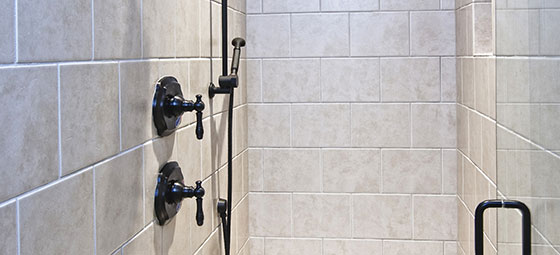Universal design has become an important concept in home remodeling. Many people have the misconception that universal design involves designing specifically for elderly or disabled individuals. In reality, universal design is an architectural approach to creating space that comfortably accommodates a wide range of differing needs and requirements of users, regardless of age or physical abilities. Incorporating universal design elements into your home allows your home to grow with you and accommodate everyone, from the youngest family members to the oldest. It may also make your home more attractive to future potential buyers.
The bathroom, in particular, can benefit greatly from universal design. If you are preparing to remodel your bathroom, it is well worth it to incorporate universal design elements into your plans. In most cases, it is only slightly more expensive to include these accommodations. If you’re concerned that including universal design features will make your bathroom resemble that of a hospital, rest assured that this does not have to be the case. More and more companies are creating high-end components that offer outstanding style and luxury, making it possible to create a bathroom that accommodates both the able-bodied and those with special needs with beauty and elegance.
There are a number of universal design features you can incorporate into your bathroom remodeling project that will improve its accessibility:
- Increased space – Allow ample space to maneuver, including beside the toilet to allow for safer transfers to and from a wheelchair.
- Wider doors – Your bathroom door should allow 32 inches of clear space when the door is open, which usually requires a 36-inch wide door. Make sure you have adequate room for this wider door to swing open.
- Grab bars for the tub, shower, and toilet – To install grab bars, you may need to add reinforcement to your tub, shower, and toilet surrounds to accommodate them. Even if you don’t add the grab bars now, it’s a good idea to have the necessary reinforcements added now that will accommodate grab bar installation in a variety of locations.
- Non-slip flooring – Opt for flooring that provides good slip resistance to prevent falls.
- Lever-style door handles and faucets – This style of handles are easier to use and don’t require gripping to operate. They are especially good for kids and those with arthritis.
- Wall-mounted sinks – The absence of a vanity cabinet provides space beneath the sink for wheelchairs. If you must have a vanity cabinet, opt for a wall-mounted cabinet with at least 9 inches of clearance beneath it to allow space for a wheelchair footrest.
- Curbless shower – The curbless entry reduces the risk of falling while entering the shower. It will also allow access via a wheelchair or other mobility device.
- Hand-held shower – This allows the user to shower comfortably while sitting.
- Shower bench – Choose a shower surround with a built-in bench or create a built-in tiled bench as part of your shower design. You can also opt for a folding shower seat.
- Offset faucet controls – Locate the faucet controls for the tub or shower close to the outside of the enclosure so users can easily operate it and test the water temperature before entering.
- Tall toilets – Look for a toilet that is 16-18 inches tall rather than standard 14-15 inches. This makes it easier to sit down and rise from the toilet and allows for easier transferring from a wheelchair.
- Adjustable, wall-mounted mirror – This allows users in wheelchairs to adjust the mirror angle to their needs.
- Lowered towel bars – Install towel bars between 36 and 48 inches from the floor. Most people can reach this height, even while sitting.

